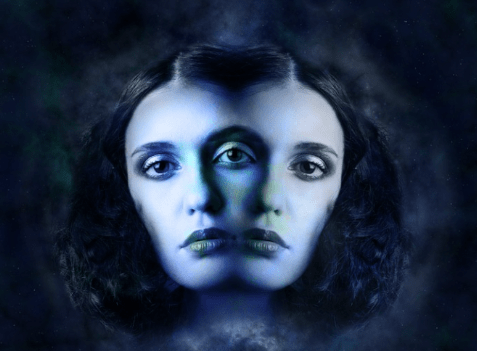With deepfake images recently making the news by fooling many people, we look at the issues around fake images and how to spot them.

Recent Examples
The emergence of AI has led to an increasing output of highly convincing fake images/manipulated images/deepfake images (and deepfake videos). Motivations for making these images vary, e.g. entertainment (fun or visual effects in movies and TV), political propaganda, revenge, or harassment (to harass, embarrass, or intimidate individuals), to commit fraud, or simply for artistic expression.
Recent examples of fake images that have made the news include:
– Fake images of Pope Francis wearing what appears to be a $3,500 Balenciaga puffer coat.
– Fake images, circulated on social media, of former US President Donald Trump being arrested, and an AI-generated image on his own ‘Truth’ social media platform of him kneeling in prayer.
What Problems Can Fake Images Cause?
Fake images/manipulated images/deepfake images can cause various problems depending on the context in which they are used. For example:
– Misinformation.
Fake images can be used to spread false information, mislead people and create a false narrative. For example, doctored images of political events, protests, or disasters can create a misleading impression of what actually happened, potentially influencing public opinion or policy decisions.
– Reputational damage.
Fake images can be used to damage the reputation of individuals or organisations. For example, a fake image of a celebrity engaging in illegal or immoral activity can cause significant harm to their public image.
– Legal issues.
Fake images can be used as evidence in legal cases, but if they are not authentic, they can lead to wrongful convictions or acquittals. Moreover, fake images can cause copyright and intellectual property issues.
– Security threats.
Fake images can be used to create security threats. For example, a fake image of a terrorist attack or a natural disaster can cause panic and chaos among people, leading to a security breach.
– Personal harm.
Fake images can be used to harass, intimidate, or blackmail individuals. For example, a fake image of a person engaging in illegal or embarrassing activity can be used to blackmail or extort money from them. This gained notoriety with the trend of fake-pornographic images of well known celebrities, causing significant distress.
It should also be noted that some fake images can simply be a source of amusement or wonder over how AI has advanced and could be be seen as an example of how difficult it can now be to tell the difference between a real and a fake photo.
How Are Fake Photos Made?
Examples of the kinds of tools now used to make fake photos include:
– More traditional photo editing software like Adobe Photoshop, e.g. using the Clone Stamp tool to duplicate elements of an image and cover up unwanted objects, or the Liquify tool to reshape and distort a person’s features.
– Online image editing tools: Several online image editing tools, such as Fotor, PicMonkey, and BeFunky, provide basic image editing capabilities that can be used to create fake photos, such as adding text, filters, and borders to an image.
Deepfake software, such as DeepFaceLab, FakeApp, and Zao, use machine learning algorithms to create realistic fake photos and videos by swapping faces or manipulating the appearance of a person.
– GANs (Generative Adversarial Networks), a type of artificial intelligence that can be used to generate realistic images. GANs consist of two neural networks, a generator that creates images and a discriminator that tries to distinguish real images from fake ones. As the generator learns, it can create more realistic images, making it a powerful tool for creating fake photos.
There are now many different AI programs that can be used to create fake images such as Generated.photos, This Person Does Not Exist: Random Face Generator, Shutterstock Generate, Jasper, Picsart, and even the next generation of ChatGPT, some of which can now instantly generate photos from a text description.
How To Spot A Fake Image
With so many fake images around and so many AI-powered programs available, how can you spot a fake image? Here are some common giveaways:
– Unnatural or inconsistent lighting.
If the lighting in the image looks unnatural or inconsistent, such as different parts of the image having different shadows or light sources, it could be a sign that the image has been manipulated.
– Pixelation or blurring.
If parts of the image look pixelated or blurred, it could be a sign that they have been altered. This is because when an image is edited, it often loses some of its original quality.
– Perspective and proportions.
If the proportions or perspective in the image look distorted or inconsistent, it could be a sign that the image has been manipulated. For example, if a person’s head looks too big or too small for their body or if an object looks like it’s floating in the air, it could be a sign that it has been added to the image. It is often noted that hands can be a difficult area for fake image programs to get right, and the direction of eyes in a photo where there are multiple persons can also be a giveaway.
– Inconsistencies in shadows.
If there are inconsistencies in the shadows in the image, it could be a sign that the image has been manipulated. For example, if a person’s shadow falls in a different direction than the other objects in the scene, it could indicate that the person has been added to the image.
– Lack of context.
If the image lacks context or appears to be taken out of its original context, it could be a sign that it has been manipulated. For example, if an image shows a person in front of a particular background, but the person does not appear to be interacting with their surroundings, it could indicate that the person has been added to the image.
– Although it’s important to be vigilant and critical when viewing images online and to look for signs of manipulation, it’s also a good idea, if in doubt, to know how to and to try to verify the authenticity of an image by checking the original source.
Verifying Images
Verifying the authenticity of an image can be challenging, however there are several steps you can take to help determine if an image is real or has been manipulated:
– Check the source.
One of the easiest ways to verify the authenticity of an image is to check its source. If the image is from a reputable news outlet, a government agency, or a trustworthy website, it is more likely to be real. However, if the image is from an unknown source or an unverified social media account, it could be fake.
– Look for metadata.
Metadata is information embedded in the image file that can provide details about when and where the image was taken, the camera used, and other relevant information. You can use image analysis software or online tools to view the metadata of an image and determine if it matches the content of the image.
– Use a reverse image search.
A reverse image search can help you find out where an image has been used before and whether it has been altered. You can use search engines such as Google Images or TinEye to upload the image or its URL and see if there are any matches.
– In more high-profile cases that make the news, there is also the option of consulting with experts in image analysis or forensics who can examine the image and provide a professional opinion. This can be especially helpful in cases where the image is of significant importance or is being used to influence public opinion.
Overall, verifying the authenticity of an image requires critical thinking, attention to detail and a willingness to do some research. By following these steps, you can increase your chances of determining if an image is real or fake.
What Does This Mean For Your Business?
The pace at which AI is advancing has meant that much more convincing fake images (and videos) can be made more quickly and easily and it’s this pace that’s recently alarmed some people into calling for a 6 month pause on the development of AI systems to assess the risks (a 1,800 signature open-letter, including Elon Musk’s).
Although there are many ways to spot and verify fake photos, it looks likely that this is going to become more difficult to check and we even need the help of AI to help us spot AI generated deepfakes. Even the powerful social media platforms haven’t been able to stop fake profile photos and the circulation of fake photos and videos on their platforms are cause for concern, e.g. spreading propaganda/misinformation and is something the social media platforms will need to get a firmer grip on.
It could be argued that education and awareness of news and world events is one important way that people can be aware of context and be better able to develop a healthy scepticism and be more able to spot fake photos and their possible motivations. For businesses, being able to identify fake photos is an important issue from a security and legal perspective so it’s important to be familiar with popular ways to tell the difference between real and fake photos and how to verify photo (and video) authenticity.
By Mike Knight
